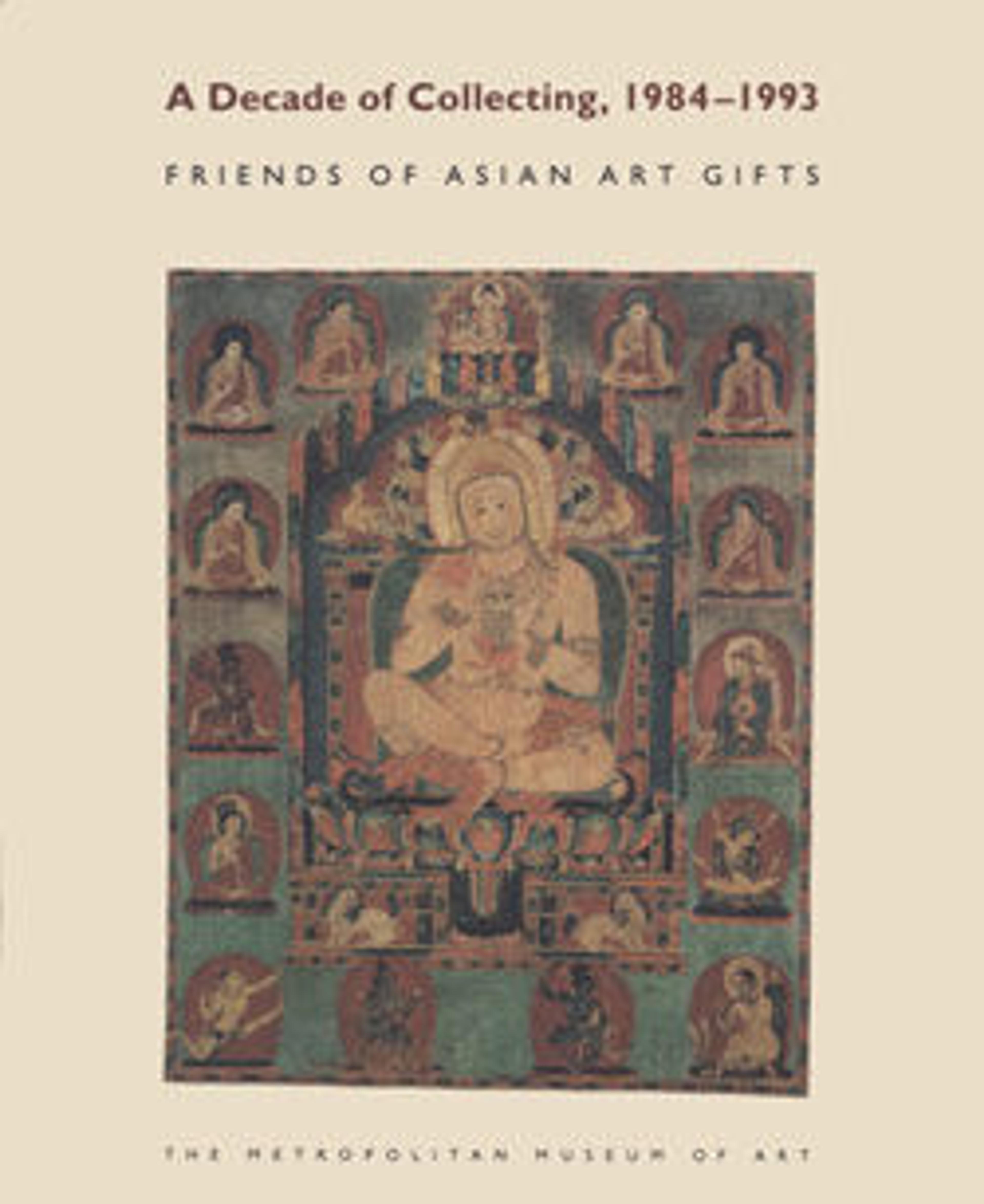Guanyin the Bringer of Sons
A rare example of ecclesiastical painting from the end of the Ming period, this richly colored painting presents Guanyin (Avalokiteshvara in Sanskrit), the Bodhisattva of Infinite Compassion, in a peculiarly Chinese manifestation as the provider of male offspring. Guanyin is seated on a lion (a symbol of royalty in India), descending toward the worshiper on a plume of clouds while holding a baby in his arms. The child is girded by a jewel-encrusted belt and holds an imposing seal, both emblems of high official rank. Below him is the adoring figure of Sudhana, the young boy whose auspicious birth enabled him to set forth immediately on a quest for spiritual enlightenment.
Artwork Details
- 明 佚名 送子觀音圖 軸
- Title:Guanyin the Bringer of Sons
- Artist:Unidentified artist , late 16th century
- Period:Ming dynasty (1368–1644)
- Date:late 16th century
- Culture:China
- Medium:Hanging scroll; ink, color, and gold on silk
- Dimensions:Image: 47 1/2 x 23 3/4 in. (120.7 x 60.3 cm)
Overall with mounting: 85 3/4 x 30 1/2 in. (217.8 x 77.5 cm)
Overall with knobs: 85 3/4 x 33 1/4 in. (217.8 x 84.5 cm) - Classification:Paintings
- Credit Line:Purchase, Friends of Asian Art Gifts, 1989
- Object Number:1989.152
- Curatorial Department: Asian Art
More Artwork
Research Resources
The Met provides unparalleled resources for research and welcomes an international community of students and scholars. The Met's Open Access API is where creators and researchers can connect to the The Met collection. Open Access data and public domain images are available for unrestricted commercial and noncommercial use without permission or fee.
To request images under copyright and other restrictions, please use this Image Request form.
Feedback
We continue to research and examine historical and cultural context for objects in The Met collection. If you have comments or questions about this object record, please contact us using the form below. The Museum looks forward to receiving your comments.
